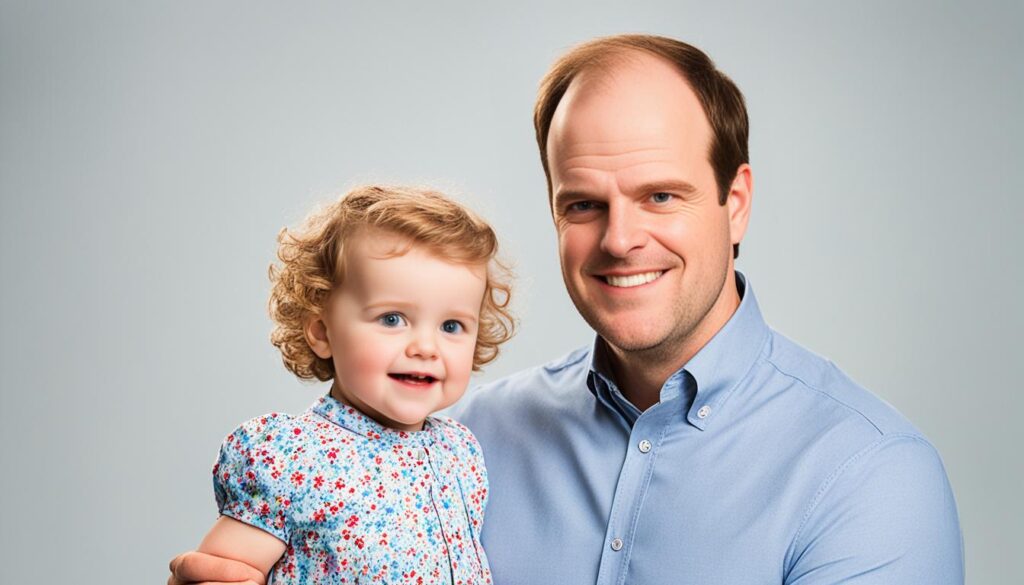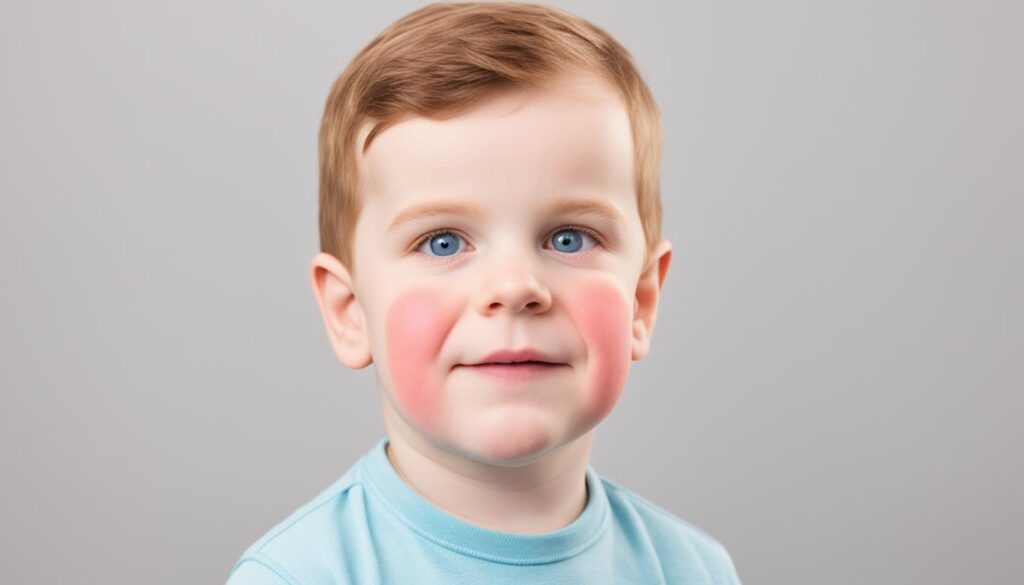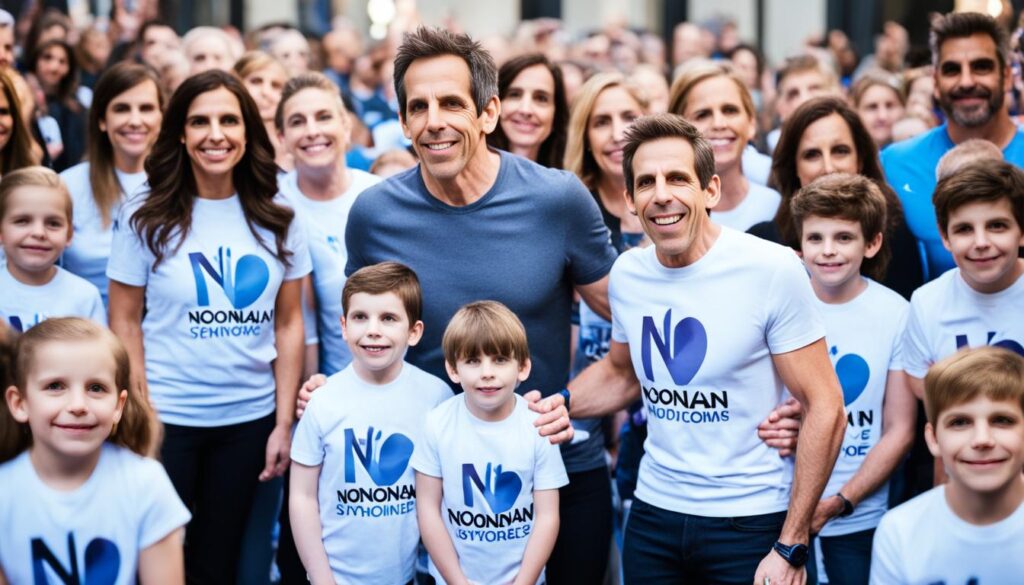In recent years, we have witnessed a significant shift in how celebrity health conditions are discussed in the public sphere. One prominent figure making strides in this arena is Ben Stiller, who has openly shared his journey with Noonan syndrome. This condition, classified as a rare genetic disorder, affects countless individuals yet often flies under the radar. Through his transparency and advocacy for Noonan syndrome awareness, Stiller has shed light on the realities of living with this condition, inspiring many to engage in discussions surrounding rare genetic disorders.
We will explore how Stiller’s experiences not only highlight the challenges associated with Noonan syndrome but also emphasize the crucial role public figures play in driving healthcare dialogues. By amplifying such important discussions, we can foster greater understanding and compassion within our communities, ultimately paving the way for improved support and awareness.
Introduction to Noonan Syndrome
Noonan Syndrome represents a group of rare genetic disorders that can affect various aspects of an individual’s health and development. This syndrome is often identified by distinctive facial features, such as widely spaced eyes and a broad forehead, alongside other challenges like short stature and potential heart defects.
The genetic basis of Noonan Syndrome lies in mutations of genes crucial for cell signaling processes. These genes play significant roles in the development of multiple organ systems. Understanding the Noonan syndrome causes is vital for early diagnosis and intervention.
Individuals with Noonan Syndrome may face numerous challenges in their daily lives, which can be further complicated by associated health issues. The range of Noonan syndrome symptoms can vary from one person to another, leading to unique experiences among those affected.
Research indicates that Noonan Syndrome has a prevalence of approximately 1 in 1,000 to 2,500 births. Given its relatively common occurrence among rare genetic disorders, increased awareness and understanding can help improve the lives of those diagnosed.
| Characteristic | Details |
|---|---|
| Facial Features | Wide-set eyes, low-set ears, broad forehead |
| Growth | Short stature in childhood |
| Heart Defects | Commonly present, such as pulmonary stenosis |
| Developmental Delays | Varies with each individual |
The Impact of Noonan Syndrome on Individuals
Noonan Syndrome affects not only those diagnosed but also their families, creating a web of challenges that are both medical and emotional. Individuals with this condition often encounter various noonan syndrome symptoms that can lead to serious health issues. Surgeries for congenital heart defects, among other medical interventions, become a common part of their lives.
The social implications can be equally significant as families navigate the complexities of daily life. Children may experience feelings of isolation due to physical differences, leading to emotional consequences. These challenges often compound the stress on families, as they work to provide the necessary support for their loved ones while also facing their own emotional hurdles.

Statistics reveal that many individuals with Noonan Syndrome experience developmental delays, which can further complicate their educational and social experiences. Understanding these impacts encourages greater Noonan syndrome awareness within our communities, promoting empathy and support for those affected and their families.
| Impact Area | Description | Examples |
|---|---|---|
| Medical Challenges | Common health issues related to Noonan Syndrome. | Heart defects, surgery, sensory impairments. |
| Social Challenges | Emotional and social situations faced by individuals. | Isolation, bullying, developmental delays. |
| Family Impact | The effects on families coping with the syndrome. | Increased stress, financial burdens, emotional strain. |
Understanding the multifaceted impacts of Noonan Syndrome is crucial for fostering a supportive environment. By sharing personal stories and statistics, we can illuminate the significance of this condition and encourage more extensive discussions surrounding ben stiller family health in context to the awareness efforts aimed at improving lives impacted by Noonan Syndrome.
Ben Stiller’s Personal Experience with Noonan Syndrome
We have learned much about Ben Stiller’s journey as he navigates life with Noonan Syndrome. In various interviews, he openly discusses his diagnosis, a *ben stiller genetic condition*, that adds depth to our understanding of this often-misunderstood disorder. His reflections reveal not only the challenges but also the resilience required to manage such a condition.
Stiller’s public persona as a comedian and actor allows him to raise awareness about *celebrity health conditions*. By sharing his story, he helps demystify Noonan Syndrome for many who might not have encountered it, fostering a sense of community among those affected. His advocacy sheds light on how personal experiences shape public discourse surrounding genetic conditions.
Through his candidness, Stiller encourages us to be more informed about *ben stiller noonan syndrome*. His insights bridge the gap between celebrity life and real health challenges, empowering individuals to embrace their stories and seek support. Together, we can benefit from such shared narratives, fostering a supportive environment for those living with genetic conditions.
Ben Stiller noonan syndrome: A Celebrity’s Perspective
Ben Stiller’s journey with Noonan syndrome offers a unique lens into the interplay between fame and personal health challenges. As a celebrity, Stiller’s visibility enhances the conversation around Noonan syndrome awareness, shedding light on genetic disorders that often remain in the shadows. His experience resonates not only with those facing similar health conditions but also with a broader audience.
Stiller’s openness about living with ben stiller noonan syndrome underscores his commitment to educating the public. He employs his platform to share his story, which helps demystify the condition and encourages discussion about celebrity health conditions. By revealing his struggles and triumphs, he inspires others to embrace their identities and advocate for themselves.
Through public appearances and interviews, Stiller challenges the stigma often associated with genetic disorders. His willingness to discuss personal experiences allows us to see beyond the surface of celebrity, exposing the human element behind the spotlight. We gain insight into the motivations that drive him to raise awareness, creating a ripple effect that influences how society views not only Noonan syndrome but also other health conditions.
Noonan Syndrome Symptoms: What to Look For
Noonan syndrome, a type of rare genetic disorder, presents a variety of symptoms that require careful observation. Understanding these noonan syndrome symptoms is crucial for early diagnosis and effective intervention. This awareness can significantly enhance the quality of life for affected individuals, making it essential for families and healthcare professionals to recognize the signs early on.
Common Symptoms
The symptoms of Noonan syndrome can vary greatly from person to person. Here are some of the most common characteristics associated with this condition:
- Short stature: Many individuals experience slower growth rates, leading to shorter-than-average height.
- Wide-set eyes: This feature is often noticeable in affected individuals, contributing to their distinct facial appearance.
- Heart defects: Congenital heart problems are prevalent among those with this syndrome, necessitating medical attention.
- Skin conditions: Conditions such as pale skin or unusual nevi can appear in early childhood.
- Developmental delays: Children with noonan syndrome might face challenges in meeting developmental milestones.
Recognizing these noonan syndrome symptoms early allows for timely medical evaluations and interventions, which can make a considerable difference in the lives of those affected. Monitoring these physical attributes alongside regular check-ups helps in crafting effective management strategies tailored to each individual’s needs.
| Symptom | Description |
|---|---|
| Short Stature | Below-average height due to slower growth rates. |
| Wide-set Eyes | A distinct facial feature that is common in this syndrome. |
| Heart Defects | Congenital issues requiring medical assessment and possibly surgery. |
| Skin Conditions | Pale skin and unusual nevi often observed in individuals. |
| Developmental Delays | Challenges in achieving developmental milestones compared to peers. |

Understanding the Causes of Noonan Syndrome
Noonan syndrome is primarily linked to mutations in specific genes that play essential roles in cell growth and development. The most commonly affected gene is PTPN11, which is responsible for producing a protein involved in various cellular processes. Mutations in this gene, along with several others such as KRAS, MAP2K1, and RAF1, contribute to the manifestations of this rare genetic disorder.
The inheritance patterns of Noonan syndrome can vary significantly. While some cases arise sporadically without a family history, others may be inherited in an autosomal dominant manner. Individuals with a family member who has Noonan syndrome have a 50% chance of passing the condition to their offspring.
The complexity of Noonan syndrome causes emphasizes the intricate nature of genetic disorders. Ongoing research continues to unravel the underlying mechanisms, which can enhance our understanding and foster advancements in treatment options.

Ben Stiller’s Role in Raising Awareness
Ben Stiller has used his platform to promote Noonan syndrome awareness effectively, highlighting the condition and advocating for those affected. His involvement in various initiatives signifies a commitment to educating the public about this genetic disorder. We appreciate celebrities who leverage their influence for a greater good, and Stiller stands out in this context.
Through collaborations with relevant organizations, Ben Stiller has engaged in outreach programs aimed at increasing visibility and understanding of Noonan syndrome. His participation in campaigns has not only educated the public but also encouraged others to share their stories, fostering a sense of community among individuals and families impacted by the condition.
Stiller’s efforts underscore the importance of awareness. By sharing his experiences and those of others, he helps demystify Noonan syndrome and dispel common misconceptions. This approach resonates with many, prompting dialogue about genetic disorders and their implications on individuals’ lives.
- Participation in awareness events: Active involvement in gatherings focused on educating others about Noonan syndrome.
- Social media campaigns: Sharing informative posts and personal stories to reach a broader audience.
- Collaboration with health organizations: Working alongside non-profits dedicated to improving the lives of affected individuals.

Celebrity Health Conditions: A Broader Look
As we explore the landscape of celebrity health conditions, the stories of public figures navigating their health challenges offer invaluable insights. Not only do these narratives provide personal context, but they also help raise awareness about various disorders, including those that are rare or genetic in nature. One shining example is Ben Stiller, whose journey with ben stiller noonan syndrome opened dialogues about this lesser-known condition.
Many celebrities, like Stiller, have utilized their platforms for advocacy. Their willingness to discuss their health struggles can have a profound impact on public consciousness. Notable figures such as Selma Blair, who has openly shared her battle with multiple sclerosis, illustrate the potential of these stories to foster understanding and empathy.
| Celebrity | Health Condition | Advocacy Impact |
|---|---|---|
| Ben Stiller | Noonan Syndrome | Increased awareness and discussions about genetic disorders |
| Selma Blair | Multiple Sclerosis | Promoted understanding of chronic illnesses through personal testimony |
| Michael J. Fox | Parkinson’s Disease | Founded a foundation, fundraising for research and treatment options |
| Halle Berry | Diabetes | Involved in education campaigns for diabetes awareness and management |
This table highlights how public figures not only navigate their personal health journeys but also leverage their experiences to educate the public. Each celebrity’s approach to advocacy serves as an inspiration, encouraging open conversations about health issues. By sharing their experiences, they empower individuals facing similar challenges and help demystify various health conditions.
Noonan Syndrome Diagnosis: How It’s Done
Understanding the Noonan syndrome diagnosis process is crucial for families affected by this condition. Early and accurate diagnosis plays a significant role in managing symptoms and improving health outcomes. We, as advocates for awareness, recognize that a combination of clinical evaluations and genetic testing is essential in identifying rare genetic disorders like Noonan Syndrome.
Healthcare professionals typically begin with a comprehensive examination, looking for physical characteristics associated with Noonan Syndrome. This includes assessing growth patterns, facial features, and any congenital heart defects. Following the initial clinical evaluation, genetic testing can confirm the diagnosis by identifying mutations in genes linked to the syndrome.
The timely diagnosis of Noonan Syndrome can lead to a tailored treatment plan, addressing specific health needs for those impacted. For families, navigating this process can be overwhelming. Healthcare providers play a vital role, guiding us through not only the technical aspects of diagnosis but also offering emotional support.
Several factors can influence the accuracy and timeliness of the Noonan syndrome diagnosis, such as:
- Availability of specialist services
- Knowledge and training of healthcare providers
- Access to genetic testing
- Family history and awareness of potential symptoms
Recognizing these factors helps us advocate for better resources and education around rare genetic disorders. Through combined efforts, we can strive for improved recognition, timely interventions, and ultimately better quality of life for individuals with Noonan Syndrome.
| Diagnostic Method | Description |
|---|---|
| Clinical Evaluation | A thorough physical examination assessing symptoms commonly associated with Noonan Syndrome. |
| Genetic Testing | Testing for mutations in specific genes related to Noonan Syndrome, confirming the diagnosis. |
| Family History Review | Understanding the patient’s genetic background to identify any hereditary patterns that may indicate Noonan Syndrome. |
| Multidisciplinary Approach | Collaboration among specialists in genetics, cardiology, and other fields to provide a comprehensive assessment. |
Conclusion
As we reflect on Ben Stiller’s journey with Noonan syndrome, it becomes clear that Noonan syndrome awareness is not just about understanding the condition itself, but also about recognizing its impact on individuals and families affected by rare genetic disorders. Stiller’s experiences and advocacy provide a compelling narrative that illustrates how a celebrity’s influence can spark important conversations around these often-overlooked health issues.
The visibility brought forth by public figures like Ben Stiller encourages us all to engage in discussions about genetic conditions, fostering a community that supports awareness and education. As more individuals become informed about the symptoms and implications of Noonan syndrome, we strengthen our capacity to support those facing such challenges in their daily lives.
Ultimately, it is our collective responsibility to enhance health literacy regarding Noonan syndrome and similar conditions. Through our efforts to educate, advocate, and share knowledge, we can help pave the way towards a more informed society that values health equity and compassion for those living with Noonan syndrome and other rare genetic disorders. Let’s continue to champion this cause together.